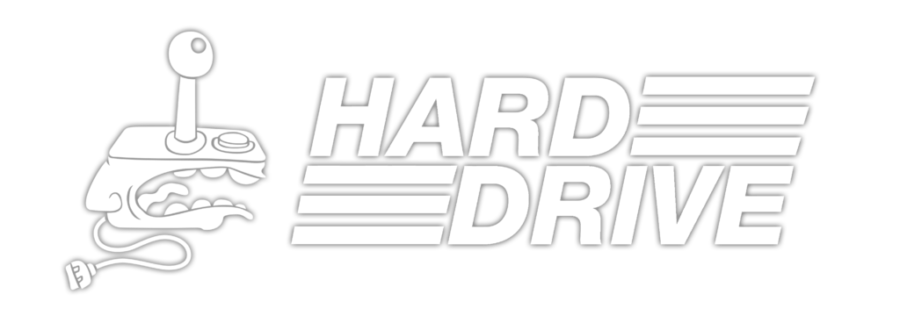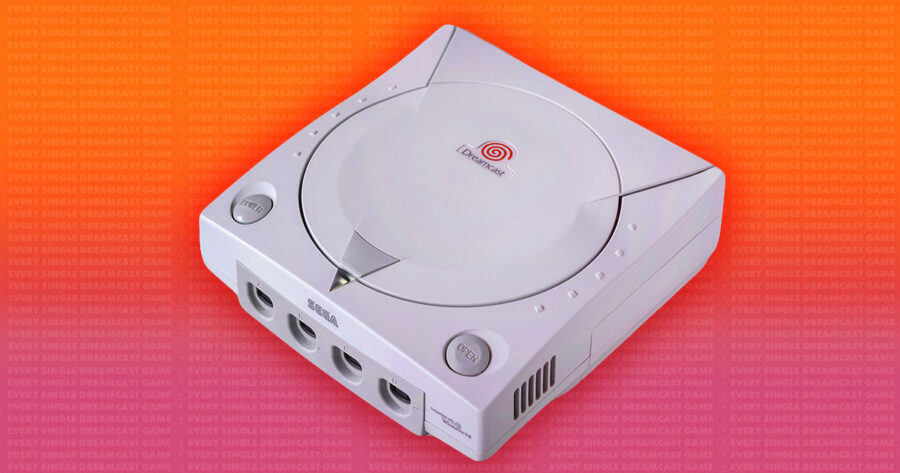#35. Tennis 2K2
October 23, 2001
Hitmaker
Sega

Long before the days of Wii Sports, if you wanted to dominate your friends on the courts, the 2K series was the way to go. Each of the entries, from the NBA to the NFL were solid and thoroughly enjoyable experiences. However, the title that was easiest to pick up and talk ridiculous amounts of shit in was Tennis 2K2.
It’s simple. You pick your mode, pick your player, and start lobbing devastating serves, ankle-breaking cross course shots, and deliciously deceptive shorts just over the net. The graphics are utterly fantastic and the controls are so pleasantly simple, which are both rare treats on the Dreamcast. It’s one of those rare gems that made the Dreamcast so memorable. And though it lacks Sharapova-factor, the ability to pit one Williams sister against another more than makes up for it. I’ve not been as riled up playing a Dreamcast title as I was this one. It is satisfying on a guttural level to set up your opponent for a shot they have absolutely no chance in hell of hitting. Get fucked, 2001 Jelena Dokic. — C. Dawson
#34. Giga Wing 2
May 16, 2001
Takumi Corporation
Capcom
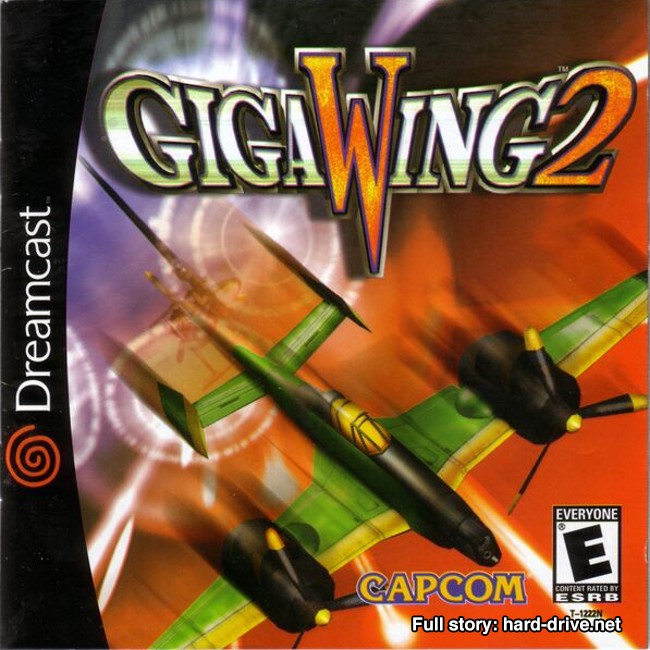 Giga Wing 2 takes everything from the original game and cranks it up a notch. There’s an extra pilot, an extra shield mechanic, and graphics that actually belong on this console and feel genuinely cinematic. The impenetrable story is still clunkily translated and has something to do with the U.N. using “Lost Technology” to store all the negative emotions of mankind in an ark. Surprisingly, that backfires, and our heroes are left dealing with the fallout. I definitely missed some of it, because the dialogue auto-scrolled too fast for me to read all of it. It’s like the game knew I just wanted to get back to blowing stuff up. Unlimited continues are back, so if you just want to play through the game, it’s no sweat. Racking up a good high score will take time and practice, but no matter how many runs you do, you will never make sense of the narrative. I wouldn’t have it any other way. — K. Duggan
Giga Wing 2 takes everything from the original game and cranks it up a notch. There’s an extra pilot, an extra shield mechanic, and graphics that actually belong on this console and feel genuinely cinematic. The impenetrable story is still clunkily translated and has something to do with the U.N. using “Lost Technology” to store all the negative emotions of mankind in an ark. Surprisingly, that backfires, and our heroes are left dealing with the fallout. I definitely missed some of it, because the dialogue auto-scrolled too fast for me to read all of it. It’s like the game knew I just wanted to get back to blowing stuff up. Unlimited continues are back, so if you just want to play through the game, it’s no sweat. Racking up a good high score will take time and practice, but no matter how many runs you do, you will never make sense of the narrative. I wouldn’t have it any other way. — K. Duggan
#33. ChuChu Rocket!
November 11, 1999
Sonic Team
Sega
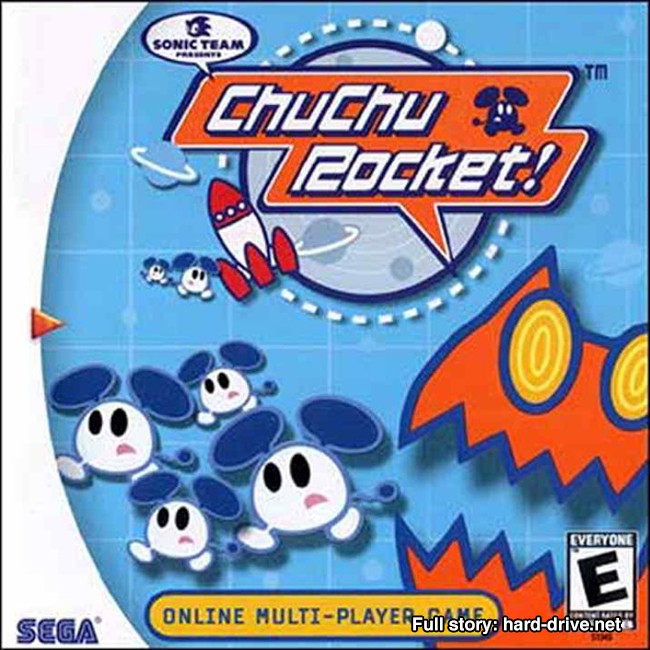 As I was playing ChuChu Rocket, I found myself wishing that I was on the toilet. I wasn’t experiencing any digestive distress, the game’s puzzles were just reminiscent of the type of puzzler that you typically see on phones nowadays, and I usually play those with my shorts around my ankles. It packs in a lot of fun for a game that was mostly an experiment to test Sega’s networking capabilities, and the art direction is sufficiently cute. The 100 single player levels will only last you the equivalent of a few trips to the bathroom, but the fast-paced multiplayer mode will keep you entertained until your legs are numb. It’s an excellent party game for people who like seeing their friends lose more than they like actually winning. Plus, as the game originally retailed for well below the cost of a typical Dreamcast title, I think it deserves to be graded on a bit of a curve. Now, if you’ll excuse me, I’ve got to go spend some time on my phone. — K. Duggan
As I was playing ChuChu Rocket, I found myself wishing that I was on the toilet. I wasn’t experiencing any digestive distress, the game’s puzzles were just reminiscent of the type of puzzler that you typically see on phones nowadays, and I usually play those with my shorts around my ankles. It packs in a lot of fun for a game that was mostly an experiment to test Sega’s networking capabilities, and the art direction is sufficiently cute. The 100 single player levels will only last you the equivalent of a few trips to the bathroom, but the fast-paced multiplayer mode will keep you entertained until your legs are numb. It’s an excellent party game for people who like seeing their friends lose more than they like actually winning. Plus, as the game originally retailed for well below the cost of a typical Dreamcast title, I think it deserves to be graded on a bit of a curve. Now, if you’ll excuse me, I’ve got to go spend some time on my phone. — K. Duggan
#33*. Samba de Amigo
October 17, 2000
Sonic Team
Sega
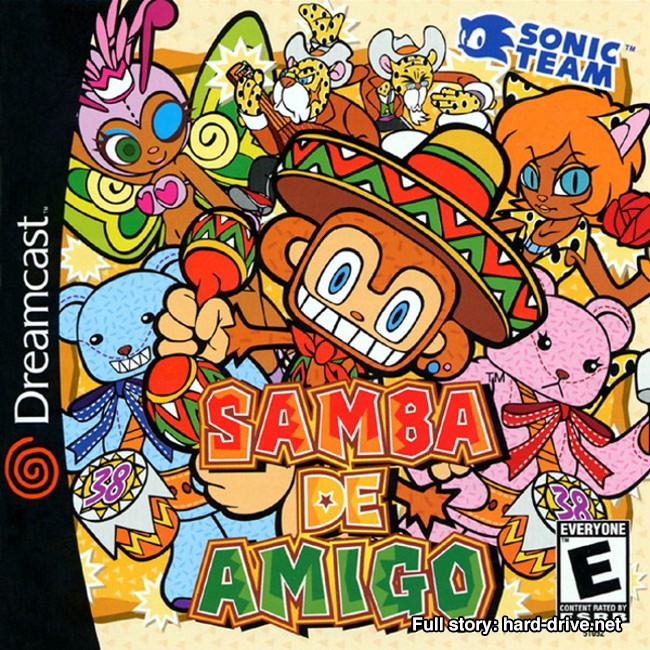 It’s important to note that I do not own Samba De Amigo‘s controllers, 2 majestic maracas that the game is known for, I’ve never played Samba de Amigo before, but know how beloved it is, and I did not know that the game has a non-maracas option.
It’s important to note that I do not own Samba De Amigo‘s controllers, 2 majestic maracas that the game is known for, I’ve never played Samba de Amigo before, but know how beloved it is, and I did not know that the game has a non-maracas option.
Now, I have a new beloved rhythm game, because Samba is incredible.
This is the only game I know that asks for your height when you start (but don’t worry short kings, it’s not a big deal). It also comes with different warnings about swinging around the controllers, years before Wiimotes were breaking TVs worldwide. While I could go on about other oddities in the game, including the leopard jazz brothers, I need to talk about the actual game.
There’s six zones to shake maracas/ press buttons in time with music, and a Let’s-Dance pose obstacle. It all works really well, even in the minigames, which are far more entertaining than they have any right to be. But what’s the thing that makes Samba De Amigo one of my favorite Dreamcast titles? One of the included songs is Reel Big Fish’s cover of ‘Take On Me.’ — J. Ruggiero
(*Note: This game appears on the list twice in two wildly different spots. A statement on the ultimately subjective nature of lists like this, or an oversight from an editor that is so, so tired? I’ll let you decide!)
#32. NFL2K2
September 18, 2001
Visual Concepts Sega
Sega
 If they make some god damned movie about the Madden franchise with Will Ferrell playing the legendary coach like current rumors suggest, I bet it’ll be a pretty straightforward biopic about how good Madden has always been and how it became the industry standard through hard work and quality output. I’m thinking it’ll skip over the part where it acquired exclusive NFL rights in 2005, after the often superior and always competitive 2K series released its stellar ESPN2K5 game for retail at 20 bucks. I was there and it was unbelievable. I felt like I was leaving the store with a copy of Bonestorm in my hoodie. It looked great, the collision physics were phenomenal, its online play was well regarded, and you could hang up Chris Berman posters in your crib and become friends with Steve-O. It was fun, it was cheap, and it was much better than Madden. It was also the swan song, sadly.
If they make some god damned movie about the Madden franchise with Will Ferrell playing the legendary coach like current rumors suggest, I bet it’ll be a pretty straightforward biopic about how good Madden has always been and how it became the industry standard through hard work and quality output. I’m thinking it’ll skip over the part where it acquired exclusive NFL rights in 2005, after the often superior and always competitive 2K series released its stellar ESPN2K5 game for retail at 20 bucks. I was there and it was unbelievable. I felt like I was leaving the store with a copy of Bonestorm in my hoodie. It looked great, the collision physics were phenomenal, its online play was well regarded, and you could hang up Chris Berman posters in your crib and become friends with Steve-O. It was fun, it was cheap, and it was much better than Madden. It was also the swan song, sadly.
NFL2K2 is another fantastic game in a series that wasn’t allowed to flourish for many more years after this installment. Which is too bad. But for what it’s worth, any game from this Dreamcast run is shockingly fun to play for a yearly sports title from more than two decades ago. It’s really too bad Madden shut it down for being better than them! — M. Roebuck
#31. Mr. Driller
June 23, 2000
Namco
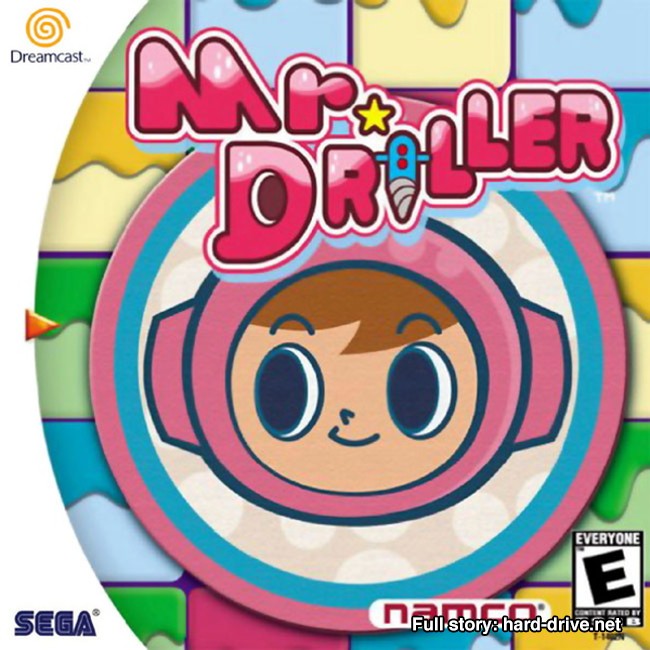 Mr. Driller is a prototypical Dreamcast game. Arcade ports were its bread and butter and this game is just another perfect example of that. Yet it doesn’t need to rest on the Dreamcast’s laurels, Mr. Driller has timeless gameplay, art, and music. And look at him! Werid blue body and bulbous pink head. He’s adorable.
Mr. Driller is a prototypical Dreamcast game. Arcade ports were its bread and butter and this game is just another perfect example of that. Yet it doesn’t need to rest on the Dreamcast’s laurels, Mr. Driller has timeless gameplay, art, and music. And look at him! Werid blue body and bulbous pink head. He’s adorable.
The gameplay combines Tetris, Puyo Puyo, and Dig Dug all together into a tough mental workout. Playing Mr. Driller at times feels like a math test that you’re acing, until you run out of air and can’t breathe. Featuring no story mode, letting you play how God intended, by booting the game and pressing play.
Having no story raises the issue of future installments introducing story and “lore,” to the franchise. I don’t think knowing that Dig Dug and Mr. Driller are father and son has done anything productive for my life, but yet now you know. I hope you can do more with that information than I have. — Chris Colman
#30. Tokyo Xtreme Racer 2
September 26, 2000
Genki
Crave Entertainment
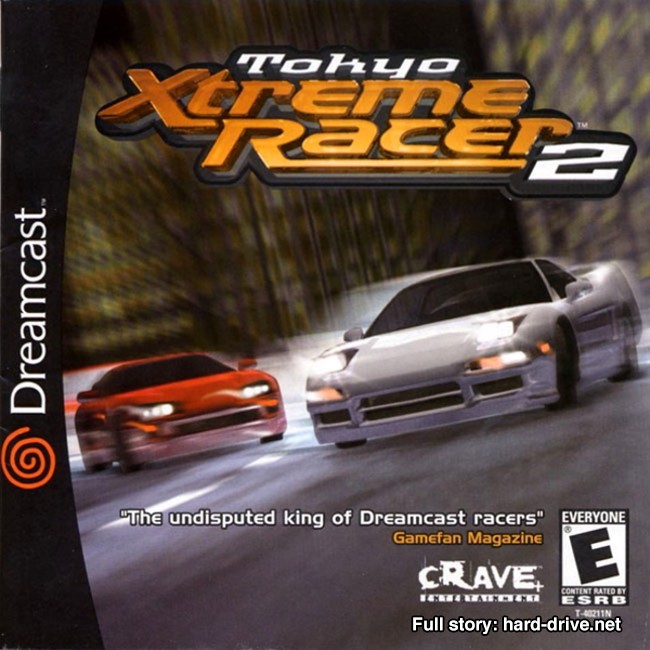 Ok, I talked about how I could play the first TXR forever, and while I sure could, this sequel keeps everything that works and adds some things the original was lacking, namely giving you more areas of Tokyo to explore. I talked about it some before, but engaging in street races with opponents and having your lives represented by fighting game power bars is more than a gimmick; it’s a downright original hybrid of genres that feature coming from behind to score a victory among their most thrilling moments. By combining a dope ass racing game with an innovative fighting game, we might just have the quintessential Dreamcast game here, my dudes. — M. Roebuck
Ok, I talked about how I could play the first TXR forever, and while I sure could, this sequel keeps everything that works and adds some things the original was lacking, namely giving you more areas of Tokyo to explore. I talked about it some before, but engaging in street races with opponents and having your lives represented by fighting game power bars is more than a gimmick; it’s a downright original hybrid of genres that feature coming from behind to score a victory among their most thrilling moments. By combining a dope ass racing game with an innovative fighting game, we might just have the quintessential Dreamcast game here, my dudes. — M. Roebuck
#29. Soldier of Fortune
July 24, 2001
Runecraft
Crave Entertainment
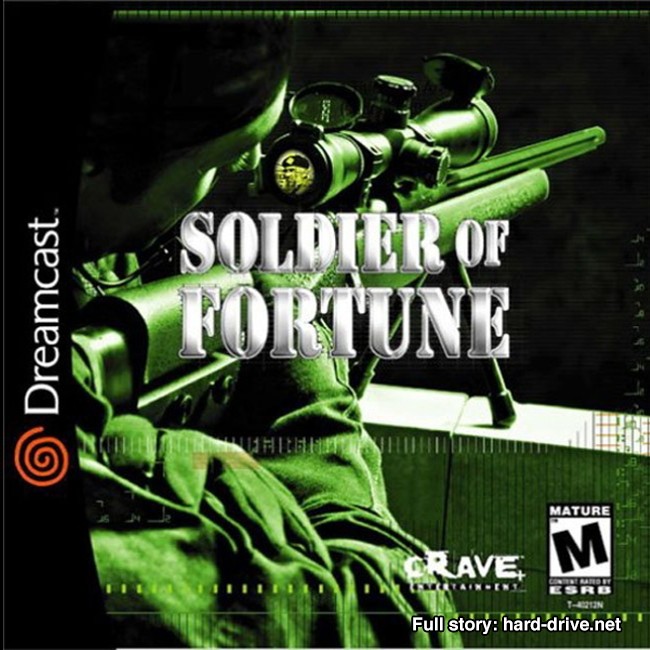
Soldier of Fortune has no right to be as good as it is. The cover looks incredibly generic with a military-esque person aiming a sniper rifle at what I can only assume is a random French person due to the beret. However, that is a classic bait and switch as Soldier of Fortune goes hard right away and never lets the foot off the pedal.
Starting off with a cinematic intro, SoF sets the tone as players must stop stolen nuclear weapons from being used by a terrorist organization. Sure, it’s not the most original concept, but it only needs to be a vehicle to get you into the action. That action is fast and intense. SoF feels like Quake under the guise of a military sim. Players can dismember enemies thanks to the GHOUL engine and it never stops being entertaining watching some thug’s arm blow off after he was just pissing on a wall. The only thing I can knock SoF for is the loose camera controls. If there was a way to adjust sensitivity, this game would be absolutely perfect. It is an absolute must-have for anyone’s Dreamcast library. — C. Dawson
#28. Quake III: Arena
October 19, 2000
Raster Productions
Sega
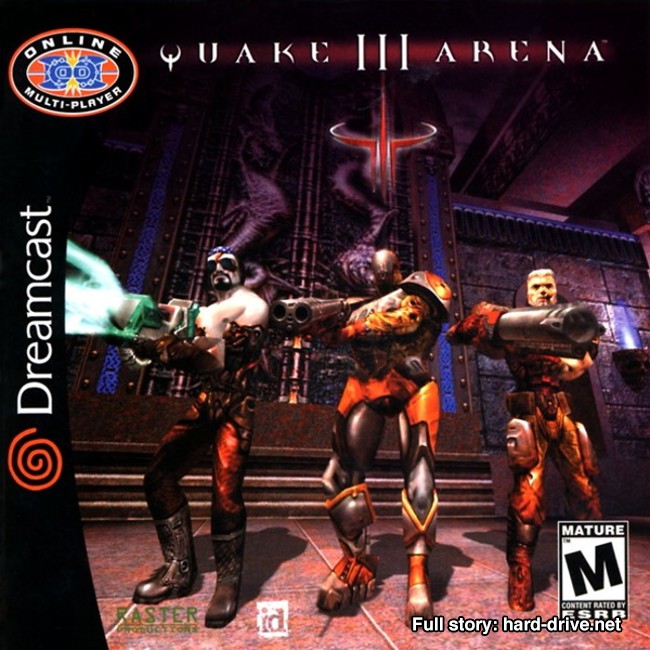
Call of Duty? Halo? Overwatch? Get all of that trash out of my face! There is and has been only one multiplayer shooter worth a good goddamn and that’s Quake III Arena. It has everything that an FPS fan would ever need. Big guns, characters that are horrific amalgamations of flesh and machinery, 16-player deathmatches, and online capability allowing one to dominate all over the world from the comfort of their sweat-stained couch.
Quake III Arena does away with the nonsense of a campaign mode and focuses all that time and energy on pulse-pounding and dick-hardening multiplayer action. There’s no such thing as loadouts as all weapons, health packs, and armor must be picked up from around the map. This rewards players that memorize maps and can lock down spawn points.
While the FPS genre has gone through radical changes over the decades, players owe it to themselves to go back to the roots and enjoy what is arguably one of the best games the genre has ever produced. — C. Dawson
#27. Cannon Spike
November 15, 2000
Psikyo
Capcom
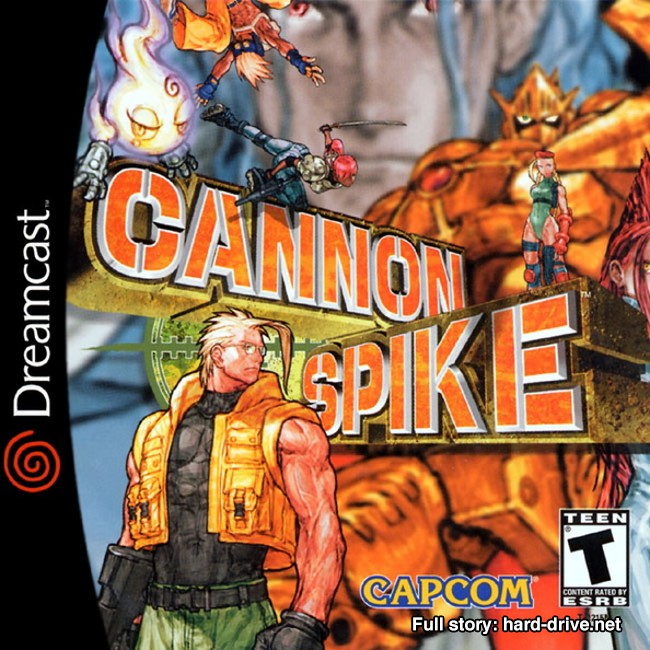 To my knowledge, Cannon Spike is a game genre all on its own, of which it is the sole entry.
To my knowledge, Cannon Spike is a game genre all on its own, of which it is the sole entry.
A true anomaly in a world of Souls-likes, Strand-types and whatever refuse is currently being peddled as “Monster Catching Games”. Which is insane, as its unique play style, control scheme, and aesthetic seem like ripe, raw materials for the trend of indie developers aping these qualities, putting them through the magic Copyright Removal Machine, and spitting out a spiritual pseudo sequel in lieu of the real deal. Let me explain further:
Cannon Spike sees a roster of Capcom’s sub-MvC cadre collected Super Smash Bros. style, pitted against waves of stylized enemies in correspondingly themed, fenced in stages. Shown from a fixed camera angle, players zig & zag around the stage on rollerblades, skateboards and scooters blasting streams of ammunition at oncomers in what I can only describe as a “bullet brawler”.
Is Hard Drive the first to coin this term? Sure, why not. When that Fandom Wiki page shows up when this formula is inevitably ripped enough to constitute a genre? Put our name up there in lights. No, we will not be double checking.
All in all, it’s arguably one of, if not the most, successful arcade to console ports I’ve ever played. The premise is as sick as it sounds. I ran up easily twice the time I would’ve needed to in order to flesh out this review purely because I was having such a goddamn field day. An effortless and simple machine. It manages to offer all the fun, fast, and addictive “just one more round, and I got this fucker” elements that compose the quarter-sucking formula of a cabinet at home, which is where most all of these things, save for fighting games, faulter. Toss it on, have a blast, and don’t forget to move the control stick all the way to the left on the character select screen. That’s where they hide Mega Man.
You’re welcome. — Walker MacDonald
#26. Evolution: The World of Sacred Device
December 16, 1999
Sting
Ubisoft
 The SNES introduced many to the turn-based RPG, which has become a genre staple on all consoles ever since. The few that are available for the Dreamcast can claim to be the best of the sixth generation.
The SNES introduced many to the turn-based RPG, which has become a genre staple on all consoles ever since. The few that are available for the Dreamcast can claim to be the best of the sixth generation.
Along with Skies of Arcadia, the Evolution series, beginning with Evolution: The World of Sacred Device, continues the grand Dreamcast RPG tradition. The game has a cutesy chibi-steampunk look and a great gameplay loop: your party, backed by a society of explorers looking for treasure, dives into a dungeon before returning home to recuperate and do it again. Plus it excels in having some of the most ridiculous stock RPG names in existence.
The tale of Mag Launcher, his friends Chain Gun, Pepper Box and Linear Cannon, and his stand-in father/butler Gre Nade is worth playing just to see what weird name the next member of your party will have. Though the game has a great story and enjoyable turn-based combat too. If you’re an RPG fan who’s never played Evolution, change that. Or wait for the remake; if Super Mario RPG can come back, maybe Evolution can too. — J. Ruggiero
#25. Bangai-O
March 21, 2001
Treasure
Conspiracy Entertainment
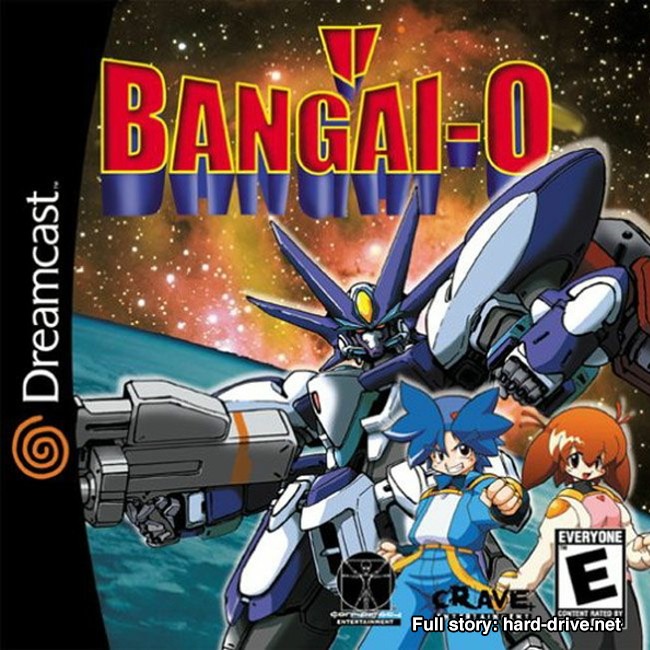
Bangai-O was developed by one of the grand-daddys of arcade shooting games, Treasure. Who also developed Sin & Punishment, Ikaruga, Radiant Silvergun, and many other games you’ve never played! With Bangai-O, youre given more freedom than what’s seen in other shmups of the time. No longer are you forced to shoot straight ahead. You have free range of the entire map, allowing you to glide around the entire environment. Like all shmups, however, your screen eventually becomes a lush visual cacophony of bullets and destruction, but it never becomes unreadable which bullets you should avoid. The thrill of guiding your little guy through the chaotic pixels, manuvering in all eight directions, is unmatched. But Bangai-O also gives us another thing not often seen in the genre. A story and cutscenes. So, blast your way through cities, destroying everything in your wake in a gleeful barrage of carnage while also being regaled by these 90’s-ass anime characters. Not much more you can ask for in a game. — G. Porter
#24. Legacy Of Kain: Soul Reaver
January 27, 2000
Crystal Dynamics
Eidos Interactive
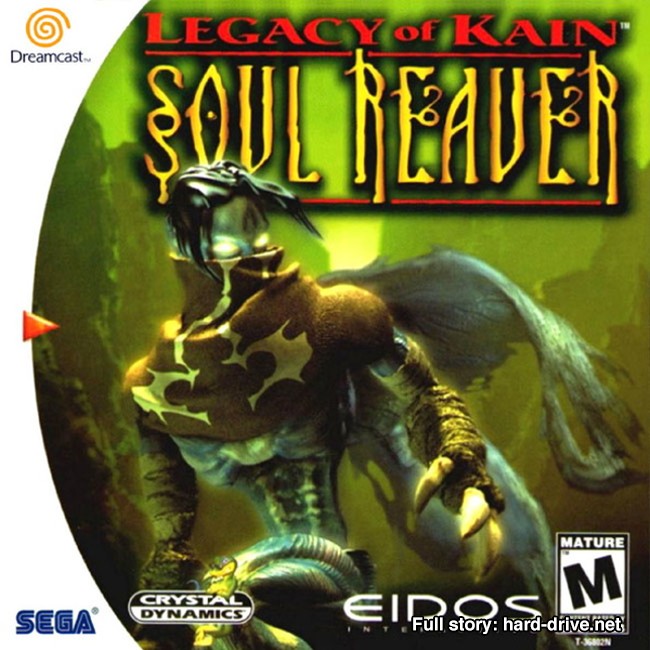
I wish I could tell you to play The Legacy Of Kain: Soul Reaver, I really do. I wish I could tell you that it’s gothic design and aesthetic is fucking cool as hell, with atmosphere dripping out of the disc, and it’s voice acting is still some of the best, putting most modern video game scripts to shame with it’s Shakespearian influences, and that Nosgoth is one of the most interesting worlds in a video game. Nothing would make me more happy. Unfortunately, If you were to play through this game, and it’s three sequels, you’d only be left a shallow husk after realizing that the story will never conclude. In a world that has birthed not just one but two modern Bubsy games, you’d think this would be ripe for a reboot or remake, alas, most of the voice actors are pushing 80 or dead, and the rights are in a constant state of limbo. However, if you push past that, you are greeted with a truly remarkable game that doesn’t deserve the fate it was given. — G. Porter
#23. Tony Hawk Pro Skater
May 24, 2000
Neversoft
Crave Entertainment
 I was harsh on this game’s N64 adaptation when we sorted all of those games out, and so I really wanted to clear something up here. I love this game, and it might be the most important game of my life. Writing jokes about shit like this for The Hard Times got me on the radar for Hard Drive when it was getting launched, and now the defining work of my career has been for this website (don’t laugh! Or, no, please laugh!). So without this game it’s possible I’m still working at that Greek diner in Tucson, smoking weed in the alley and getting sick from the food that I stole. And so if I was harsh on the N64 port, it’s just because it’s a rough version of a game that I consider revolutionary, if not perfect. A literally life changing game about skateboarding through malls. This version of that impactful game feels like the one I remember, the one you couldn’t pry me from back in 2000. There’s no manuals or reverts yet, but the school level has the damn videos of the bands playing! The N64 could barely put wheels on the skateboard, and the Dreamcast version gives you live Vandals footage while you shred! While the series obviously went on to receive a ton of refinements and polish, you could still easily lose a weekend to this version of Tony Hawk’s Pro Skater. — M. Roebuck
I was harsh on this game’s N64 adaptation when we sorted all of those games out, and so I really wanted to clear something up here. I love this game, and it might be the most important game of my life. Writing jokes about shit like this for The Hard Times got me on the radar for Hard Drive when it was getting launched, and now the defining work of my career has been for this website (don’t laugh! Or, no, please laugh!). So without this game it’s possible I’m still working at that Greek diner in Tucson, smoking weed in the alley and getting sick from the food that I stole. And so if I was harsh on the N64 port, it’s just because it’s a rough version of a game that I consider revolutionary, if not perfect. A literally life changing game about skateboarding through malls. This version of that impactful game feels like the one I remember, the one you couldn’t pry me from back in 2000. There’s no manuals or reverts yet, but the school level has the damn videos of the bands playing! The N64 could barely put wheels on the skateboard, and the Dreamcast version gives you live Vandals footage while you shred! While the series obviously went on to receive a ton of refinements and polish, you could still easily lose a weekend to this version of Tony Hawk’s Pro Skater. — M. Roebuck
#22. Bust-A-Move 4
June 1, 2000
Taito
Club Acclaim
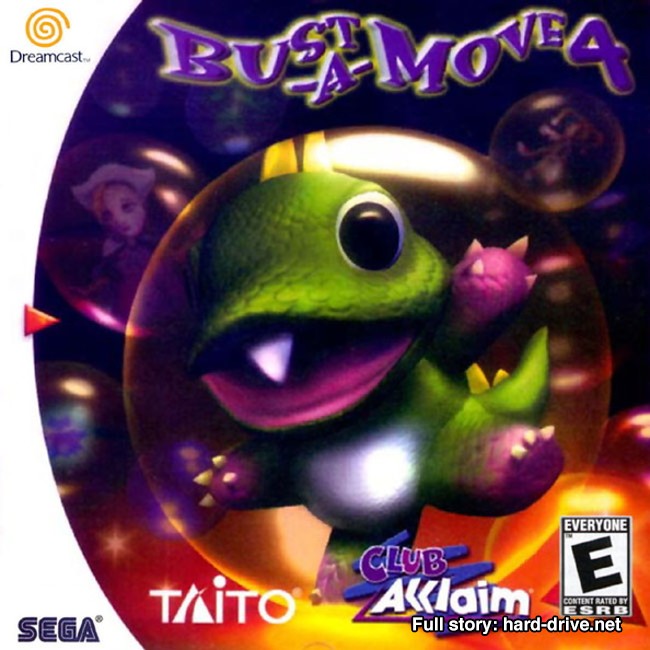
One of Bust-A-Move 4‘s greatest innovations is that it provides every gamer with the one thing missing in their miserable lives: a dream world isekai adventure starring a fat little dinosaur. In a series first, BAM4 features not only one story campaign, but two — one in its traditional Versus mode, and another in a focused single-player Puzzle mode. You can embark on both of these adventures as one of ten playable characters, each with their own voice acting and unique animations, including a little wizard named Bramb who looks like a cyan recolor of Jar-Jar Binks.
BAM4 also comes out swinging to teach you the ropes of a new core mechanic: the pulley system. A pulley requires you to consider gravity and weight to avoid dragging bubbles attached to either side below the foul line. Having to keep everything balanced adds a new layer of challenge to everybody’s favorite move-bustin’, bubble-poppin’ gameplay. Top it off with charmingly cozy pixel artwork and a peppy soundtrack composed by Taito’s own in-house band ZUNTATA, and you have one of the most lovable, satisfying puzzle experiences that the Dreamcast can offer. So get puzzling — or, as they say in Rainbow World: wan wan, gork gork! — L. Fisher
#21. Power Stone
September 9, 1999
Capcom
Eidos Interactive
 It’s this professional reviewer’s opinion that the Power Stone series isn’t as popular as Super Smash Bros. for two reasons:
It’s this professional reviewer’s opinion that the Power Stone series isn’t as popular as Super Smash Bros. for two reasons:
1) It’s only been released on the Dreamcast and PSP
2) It isn’t made up of Sega mascots.
If it wasn’t for these facts more people would have experienced and enjoyed these games, and we’d probably have an HBO series with Tom Holland starring as Edward Falcon. Sadly, we only have these two games to enjoy in this spectacular fighting series (the PSP game’s a remake). If you haven’t experienced it, PS tosses you and another player into an arena filled with ludicrous items, guns, and super-ability-granting titular Stones. Pick a character and use the scattered items to bash your opponent to hell, or acquire three stones and transform into a new powerful form.
The characters, from cultural stereotypes to whatever Jack is, don’t immediately cause massive hype like Samus and Kirby. More people would be interested in Vectorman beating the hell out of Alex Kidd in a Shinobi-themed arena. But it would be a mistake to discount this game based on the characters, because Power Stone is one of the best fighters on the Dreamcast, along with its its adventure-filled sequel. — J. Ruggiero
#20. Phantasy Star Online
January 30, 2001
Sonic Team
Sega
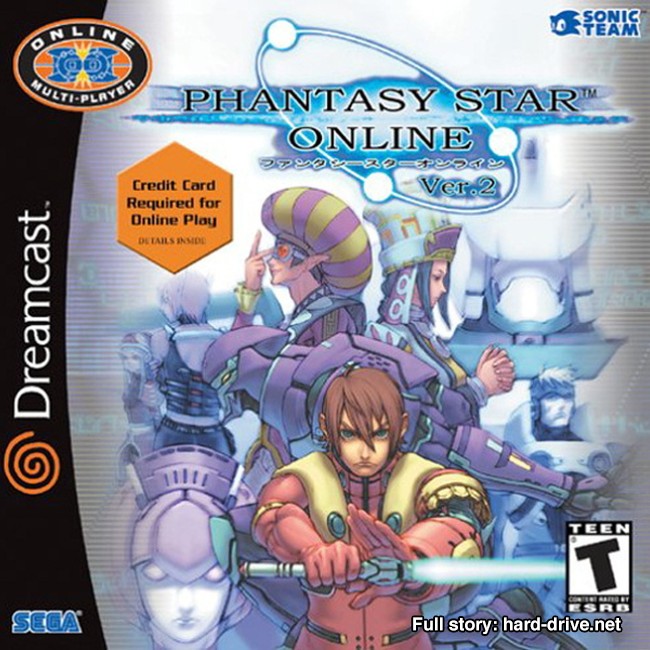
Phantasy Star Online, much like the Dreamcast itself, was a brief and brilliant shining star. For those that tried it, PSO was likely one of their first online game experiences. Players could plug in their home phone line and quote their favorite Matrix lines as their Dreamcast connected to the Internet Super Highway.
Players could team up with up to three others in this sci-fi action RPG. The story wasn’t anything to write home about and served more as a vehicle to get players from setting to setting in the highly addictive online title.
It was an incredibly innovative title that allowed console players around the world to team up and take on unique roles during adventures. The core gameplay loop was solid as players would grab quests at the hub, beam down to the planet, commit a little genocide, and then teleport back for some sweet loot.
Probably the most ironic thing considering today’s always online titles is that PSO could be played entirely offline. While many outlets at the time said it wasn’t worth playing offline, for a kid in the Midwest, gobbling up Dreamcast titles during its death knell, PSO proved to be just as addictive as its inspired MMO descendants would be. — C. Dawson
#19. Dynamite Cop
November 2, 1999
Sega AM1
Sega
 Here’s a list of things I saw during my time playing Dynamite Cop for review:
Here’s a list of things I saw during my time playing Dynamite Cop for review:
- Awesome intro cutscene laying out the plot: pirates hijacked cruise ship, president’s daughter is on board, save her before pirates find her
- Those pirates not seeing the president’s daughter in a suitcase in the same room as them
- A modern-day pirate that looks like a modern-day pirate
- A modern-day pirate that looks like an old-timey pirate
- Guys dressed like crabs and sharks
- Multiple people sharing voice lines
- A Female Punisher
- Quick-time events with awesome slo-mo and consequences for failure
- Throwing everything from chairs to forklifts to cake at enemies
- An anti-ship missile item which kills everyone in the room
- A giant octopus boss
- Losing clothes as you lose health and put them back on as you gain health
- Racist cannibal caricatures that inexplicably copy themselves
- A mechanic where you can arrest bad guys, even the cannibals
And that was the first mission, which took about an hour to play. This game rules; it’s an amazing Red Letter Media-esque “B-movie” game that had me laughing at every scene. Fans of schlock should play it and enjoy.
Finally, ADCAB. — J. Ruggiero
#18. Metropolis Street Racer
January 16, 2001
Bizarre Creations
Sega
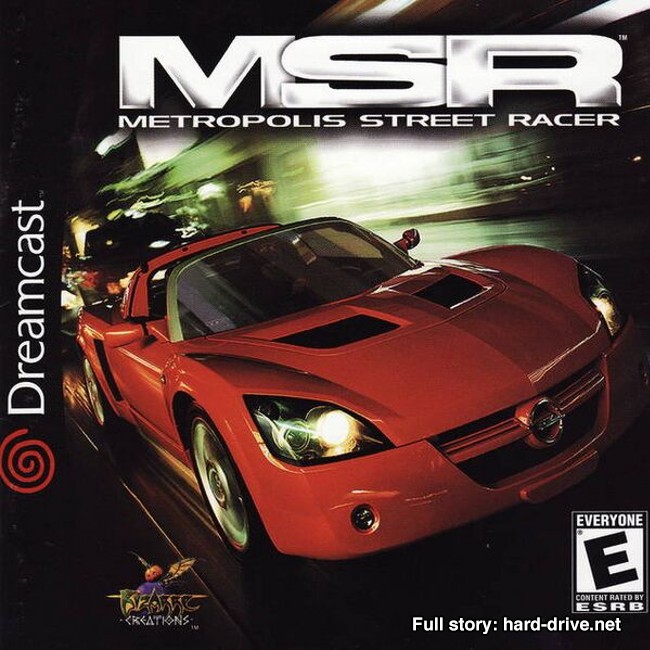 One of my absolute favorite games of all time. Other games might have more cars and more tracks, but no racing game has more Cool. You score points based on a combination of things, all of them Cool! You can adjust the objective before the race begins to increase your reward. Think you can win by 10 seconds? 20? The payouts will reflect your increased wager on yourself, should you pull it off. You also accumulate Cool points (‘kudos’) by doing Cool shit around turns and stuff. A well executed e-brake around the corner not only earns you some points but also shows you the custom message you’ve set to appear every time it happens. They can be positive encouragement like “Let’s fucking go!” or little reminders of things you want to remember like “drink water” or “the FBI killed Martin Luther King, Jr.”
One of my absolute favorite games of all time. Other games might have more cars and more tracks, but no racing game has more Cool. You score points based on a combination of things, all of them Cool! You can adjust the objective before the race begins to increase your reward. Think you can win by 10 seconds? 20? The payouts will reflect your increased wager on yourself, should you pull it off. You also accumulate Cool points (‘kudos’) by doing Cool shit around turns and stuff. A well executed e-brake around the corner not only earns you some points but also shows you the custom message you’ve set to appear every time it happens. They can be positive encouragement like “Let’s fucking go!” or little reminders of things you want to remember like “drink water” or “the FBI killed Martin Luther King, Jr.”
The points you accumulate this way unlock new races, and after every set of 15 races is a new chapter. There are 25 chapters. Which means this baby is as long as it is Cool, like a Camel 100 dipped in formaldehyde. This is the best racing game on the system and an absolute must play. — M. Roebuck
#17. Rayman 2: The Great Escape
March 21, 2000
Ubi Pictures
Ubisoft
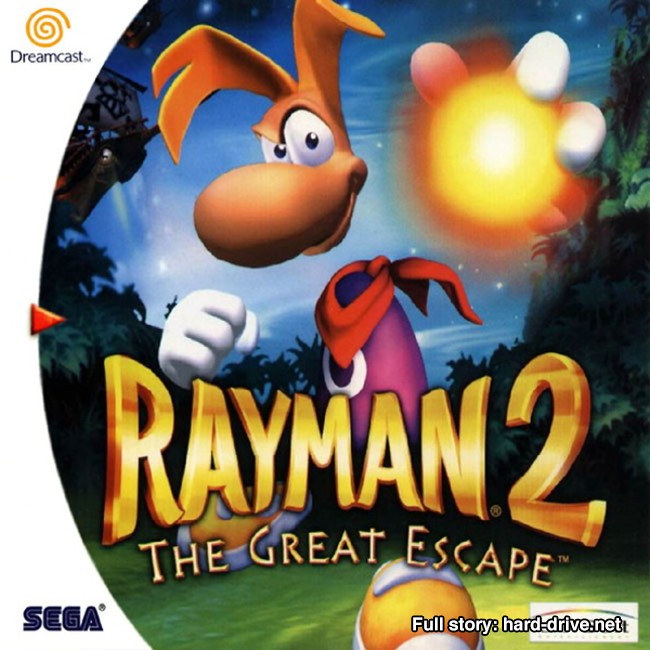
Before they made games about protagonists without souls, Ubisoft made games about protagonists without arms. How I pine for the days when their creations had such color and artistry seeping from every pore, when all dialogue and story beats didn’t feel like they’d been written by ChatGPT. Rayman 2 is one of the highest peaks of Ubisoft’s creative output with its fantastical, dream-like soundtrack, its swampy aesthetic and its unique level themes like ‘The Cave Of Bad Dreams’ and ‘The Precipice’ — levels unlike anything you’ll find in any of its contemporary 3D MarioSonics.
I am of the belief that Rayman 2: The Great Escape was done pretty dirty on our N64 list and have taken up the mantle to rectify that. Yes, the jet ski level is pretty aggravating but still far less aggravating than any Conker water level or Donkey Kong beaver herding could ever hope to be. For every wonky vehicle or sudden slide section the game has ill prepared you for, there’s a bit where you commandeer a rocket in rotating gravity or breeze through a gorgeous water level that looks and controls significantly better than anything else that console generation. (And I include Mario 64 in that.)
I’ll justify Rayman 2’s dramatically higher placement on this list than our N64 one by telling you that the Dreamcast version is almost definitely the best version. It looks truly next-gen for the time, far better than the N64 version and even a tad better than the PS1 and even adds some additional content pertaining to Globox, Rayman’s new best character; a veritable fucked-up weirdo who’s just dropped into your lap at the beginning and is now your best friend in the world. Don’t question it. It’s Rayman 2 and it can do what it wants. — B. Waters
#16. Unreal Tournament
March 13, 2001
Epic Games, Secret Level Games
Infogrames

Unreal Tournament knew exactly what it was and who it was marketed towards. This multiplayer shooter is all about big beefy men shooting even beefier guns. There is so much testosterone dripping from this title that they didn’t have any room for women which is a shame because who doesn’t want a muscle mommy absolutely dominating with a Flak Cannon?
Fantasies aside, Unreal Tournament and games like it came at a time when online multiplayer was beginning to take off. No longer confined to couch co-op, players could go online and really put their skills to the test against a large variety of players. Be it in a LAN center, at your buddy’s house, or online, there’s no wrong way to enjoy Unreal Tournament. This is one of those rare instances where a game revolutionized a genre and helped set the tone moving forward. Those influences are still felt today and interestingly enough, make Unreal Tournament extremely replayable, even today.
Despite being ported to the Dreamcast in the final year of the short-lived console’s life, players were able to get a few years of online play in Unreal Tournament before putting the thing in storage. However, it might be time to break out that little gem again if only to dunk on your kids in a local deathmatch. — C. Dawson
#15. Evolution 2: Far Off Promise
June 29, 2000
Sting
Ubisoft
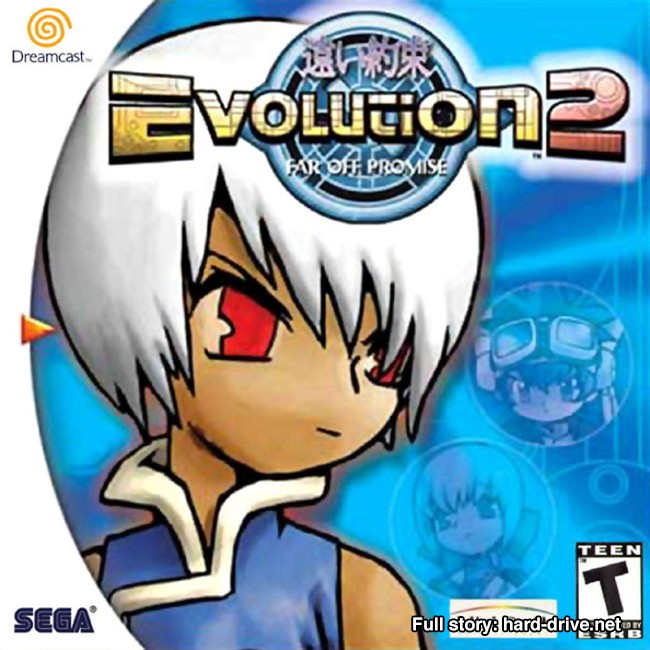 As much as I liked the first Evolution game I had never had a chance to play the sequel. It’s been twenty years since I checked in with Mag Launcher and assumed I’d be disappointed at what time had done to this grid-based RPG. Instead, I found a game that improved on the original in every way; a reminder of what I loved when I first popped The World Of Sacred Device in. I recently made it through the game, enjoying myself and what minor grinding I had to do.
As much as I liked the first Evolution game I had never had a chance to play the sequel. It’s been twenty years since I checked in with Mag Launcher and assumed I’d be disappointed at what time had done to this grid-based RPG. Instead, I found a game that improved on the original in every way; a reminder of what I loved when I first popped The World Of Sacred Device in. I recently made it through the game, enjoying myself and what minor grinding I had to do.
Evolution 2: Far Off Promise expands on the mysterious backstory of Linear while keeping the first’s great battle system and awkwardly-named butler Gre Nade. Far Off Promise’s plot seems to take a lot of inspiration from beloved RPGs of the time, including:
- Female friend of main character who is super-powerful being from ancient race
- Other female friend who is a badass and reluctant to show feelings for MC
- Big evil group who’s working with the bad guy for some kind of power
Both Evolution games are perfect windows into this era of RPGs that you should find and enjoy if you’ve never heard of them prior to this list. — J. Ruggiero
#14. Street Fighter III: Double Impact
June 21, 2000
Capcom
Capcom

At the time of its release Street Fighter III got a lot of heat from critics. While they recognized its technical perfection, they criticized it for not breaking enough new ground while also being a 2D fighter. Critics at the time were hungry for a change and horny for 3D games. It’s with little reservation that I say they were idiots.
Street Fighter III: Double Impact packages Street Fighter III and Street Fighter III: 2nd Impact into one enticing package. The third game in the series took inspiration from several different games and incorporated their mechanics quite brilliantly. Things like dashes, retreats, parrying, Super Arts, and more came into play and brought the technical fighter to a completely new level.
The biggest “flaw” with Double Impact is the roster. Capcom introduced a slew of new characters and only opted to keep Ryu and his clone, Ken, from previous entries. This was polarizing as while the new character designs are phenomenal, the lack of familiar faces makes it feel more like a different game guest starring two Street Fighter characters. I understand that Capcom was trying to tell a new story and move away from the Shadaloo saga but I would have loved to see a big ridiculous roster before the series moved to 3D.
Street Fighter III is a work of literal art. The sprites and animations are flawless and epitomize the pinnacle of 2D gaming. It will always stand amongst the top in that field and due to the incredible gameplay working in tandem with the visuals, it’s one of those rare classics that holds up to this day. — C. Dawson
#13. Grandia II
December 5, 2000
Game Arts
Ubisoft
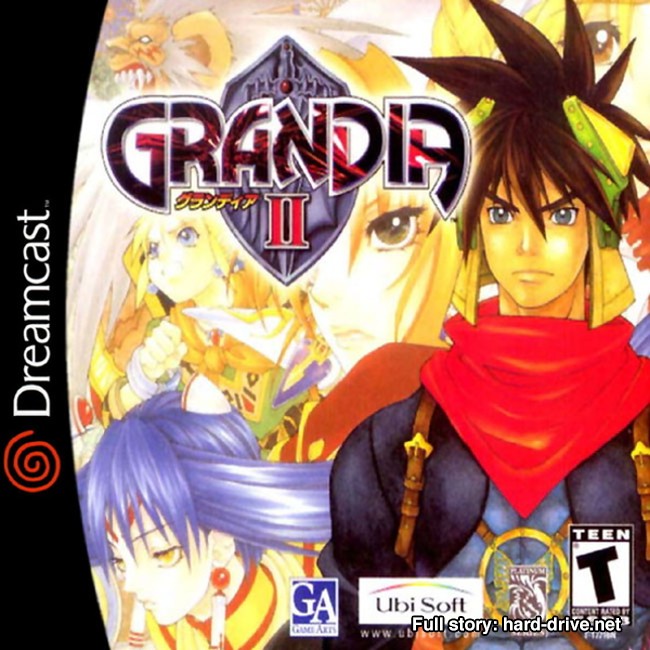 This was a victim of bad timing. Both Grandia II and Skies of Arcadia are long, elaborate, system-exclusive JRPGs, but G2 came out three weeks later in North America. SoA also got a much harder marketing push, before and since, due to being a first-party Sega production. It’s a shame, because Grandia II is just as good as SoA. In some ways, it’s better.
This was a victim of bad timing. Both Grandia II and Skies of Arcadia are long, elaborate, system-exclusive JRPGs, but G2 came out three weeks later in North America. SoA also got a much harder marketing push, before and since, due to being a first-party Sega production. It’s a shame, because Grandia II is just as good as SoA. In some ways, it’s better.
At the time of its release, G2 had one of the best combat systems of any JRPG, bar none, with some genuine tactical depth. You could land counter-hits to interrupt enemies’ actions, carefully position your characters to get them out of the line of fire, and string together combination attacks. The closest analogue in modern games might be Octopath Traveler, and it doesn’t feature full free 3D movement in mid-battle. The biggest thing G2 has going for it is that its protagonist is a snarky asshole. At a point when JRPG heroes tended to be idealistic kids or stoically blank audience surrogates, Ryudo starts his character arc as a sarcastic, cynical mercenary who’s done with everyone’s shit.
More importantly, he doesn’t stay that way. G2 could’ve easily played this as a bad parody, with Ryudo constantly winking at the camera about all the JRPG shenanigans unfolding around him, but it doesn’t. It’s a fine line to walk, and it’s a big part of what pulled me through to G2’s ending.
In a perfect world, Grandia II would be regarded as a classic, but its 2002 PS2 port was a botched effort, and neither of the subsequent two Grandia games made a mark. As it is, G2 is one of the best-kept secrets on the Dreamcast. It’s worth your time, even today. — T. Wilde
#12. Street Fighter III: 3rd Strike
October 4, 2000
Capcom
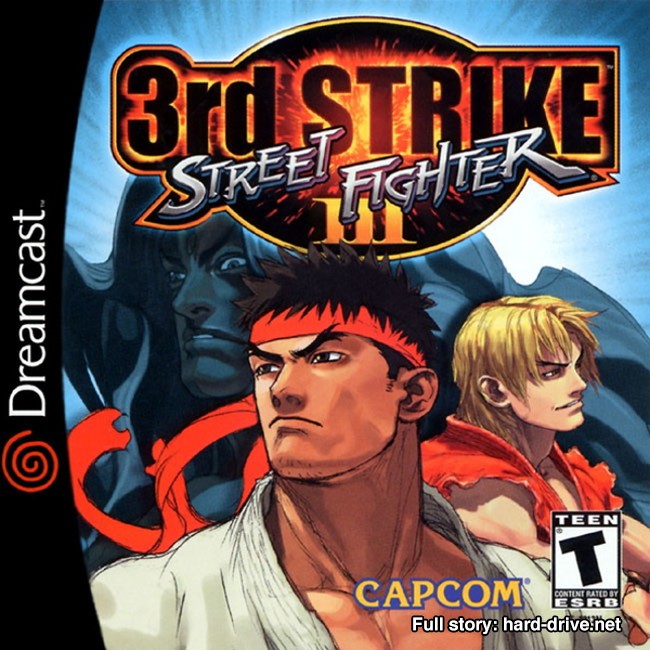 For my money, Street Fighter III: Third Strike is hands-down the best Street Fighter game to date. With its vibrant sprites and a killer soundtrack, you can’t go wrong with one of the Dreamcast’s best fighting games. It’s got a wide difficulty range that lets you hop in with no strings attached while simultaneously granting you the ability to spend hundreds of hours mastering each character’s combos. Oh, and don’t forget the phenomenal parry mechanic. There’s a reason why Third Strike is still played and talked about to this day. Oh, and the best part? No Chun-Li DLC, so your wallet won’t be opened one bit. If you’re keen on spending money, take your talents, and hundreds of dollars, to Street Fighter V. — Noah Hunter
For my money, Street Fighter III: Third Strike is hands-down the best Street Fighter game to date. With its vibrant sprites and a killer soundtrack, you can’t go wrong with one of the Dreamcast’s best fighting games. It’s got a wide difficulty range that lets you hop in with no strings attached while simultaneously granting you the ability to spend hundreds of hours mastering each character’s combos. Oh, and don’t forget the phenomenal parry mechanic. There’s a reason why Third Strike is still played and talked about to this day. Oh, and the best part? No Chun-Li DLC, so your wallet won’t be opened one bit. If you’re keen on spending money, take your talents, and hundreds of dollars, to Street Fighter V. — Noah Hunter
#11. NFL2K1
September 7, 2000
Visual Concepts
Sega
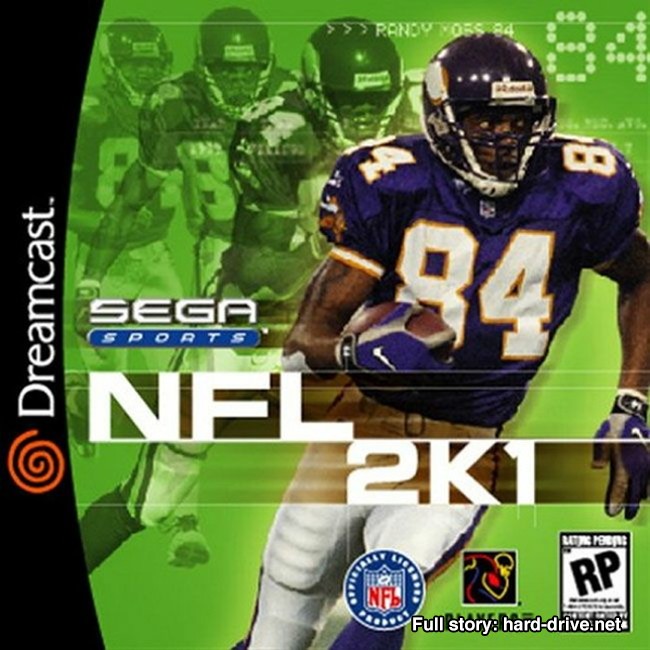 This game is right in between Halo: Combat Evolved and Half-Life 2 when you look at the top rated games of all time on Metacritic. It’s apples and oranges here of course (with Half-Life being the oranges), but I also don’t think it’s unearned. This game was revolutionary for its time, and absolutely holds up today. A bona fide classic by any measure.
This game is right in between Halo: Combat Evolved and Half-Life 2 when you look at the top rated games of all time on Metacritic. It’s apples and oranges here of course (with Half-Life being the oranges), but I also don’t think it’s unearned. This game was revolutionary for its time, and absolutely holds up today. A bona fide classic by any measure.
I spent some time in the 2K2 entry detailing how and why Madden killed this series dead, and it’s not hard to see why here. On top of everything it does better than Madden (which is kind of everything, to be honest), it had online play before any of its contemporaries! This was a game changer. I mean it. It changed the way people played sports games. Online play was always coming for every multiplayer genre, but Visual Concepts executed it successfully and two whole years before Madden did. These games were so good EA put a fucking hit out on them. I dare you to fire this up and not daydream at least a little about what NFL2K23 on a PS5 might be like. *tear* — M. Roebuck
#10. Dead or Alive 2
February 29, 2000
Team Ninja
Tecmo
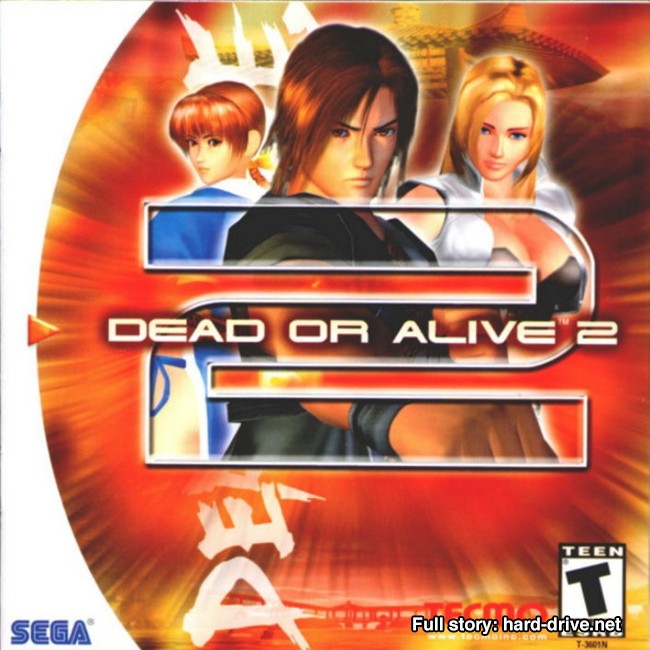 Fighting games are, almost as a rule, pretty stupid. Unless you’re a lonely, eleven-year-old latchkey kid or drunk at your brother-in-law’s bachelor party trying to ignore the misery or your surroundings then there really is no reason to play them. I have to believe the developers of Dead or Alive 2 knew this, and that is why they took a long, hard look at what the game they were making and said “let’s just make it silly as fuck then.”
Fighting games are, almost as a rule, pretty stupid. Unless you’re a lonely, eleven-year-old latchkey kid or drunk at your brother-in-law’s bachelor party trying to ignore the misery or your surroundings then there really is no reason to play them. I have to believe the developers of Dead or Alive 2 knew this, and that is why they took a long, hard look at what the game they were making and said “let’s just make it silly as fuck then.”
And in that silliness lies DoA 2’s charm. I could bludgeon you over the head all day about game mechanics (though I will make a note that the 3D, multi-tier environments are really well designed and kind of groundbreaking for the time that this game came out), but the main thing that sets DoA 2 apart from other fighting games is that it actually has personality – and that alone sets it miles ahead of most fighters out there. Any fighting game can let you punch someone, but punching someone as a character who loves pin-up posters and definitely doesn’t pay child support, all in an abandoned mall that likely exists somewhere in the Blade Runner universe, was the shake-up the genre needed. And even though later entries in the series leaned pretty hard into softcore territory, hey, just admit that your eleven-year-old latchkey self was grateful for the “bounce” mechanics that Dead or Alive 2 made you hide from your parents, or later in life, enthusiastically point out to everyone at Gary’s bachelor party. — J. Knapp
#9. Skies of Arcadia
November 13, 2000
Overworks
Sega
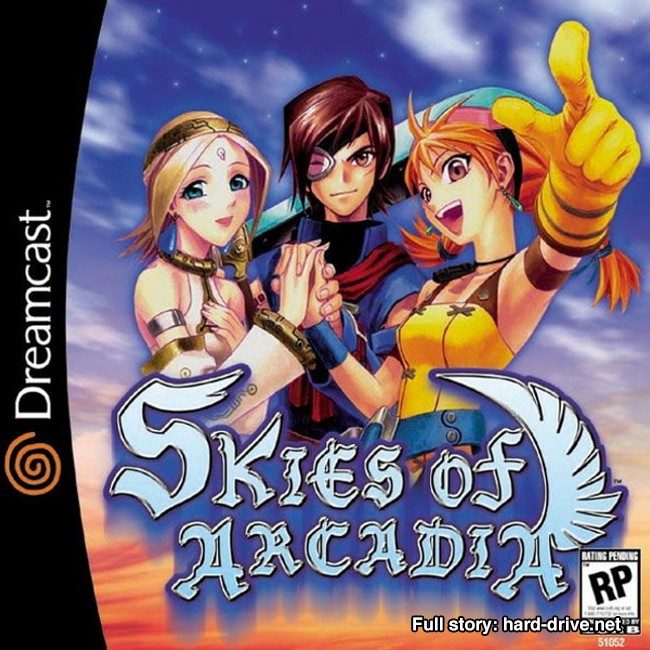 Pinta’s Quest is a virtual pet exclusive to the Virtual Memory Unit, a memory card/game system plugged into the Dreamcast controller. The game has you caring for titular character Pinta as he travels around the world in his sky boat, fighting off pirates and discovering treasure. It’s one of the best virtual pets around, with fun mini-games where you maneuver Pinta’s ship through rock storms and take part in ship-to-ship battles. Also by plugging in the VMU you can transfer items earned in Pinta’s Quest to your Skies of Arcadia file.
Pinta’s Quest is a virtual pet exclusive to the Virtual Memory Unit, a memory card/game system plugged into the Dreamcast controller. The game has you caring for titular character Pinta as he travels around the world in his sky boat, fighting off pirates and discovering treasure. It’s one of the best virtual pets around, with fun mini-games where you maneuver Pinta’s ship through rock storms and take part in ship-to-ship battles. Also by plugging in the VMU you can transfer items earned in Pinta’s Quest to your Skies of Arcadia file.
This awesome thing is just a side activity within Skies of Arcadia, the best JRPG on the Dreamcast, and one of the best of the sixth console generation. Even if Pinta’s Quest wasn’t included, SoA would still be a game where you can not only make a pirate crew, you get to use them as a summon spell. These two aspects of the game aren’t even the best parts of it, like the story and exploration mechanics, but they are some of the reasons why you’ll constantly hear people say we need a new Skies game. — J. Ruggiero
#8. Street Fighter Alpha 3
May 7, 2000
Capcom
Capcom
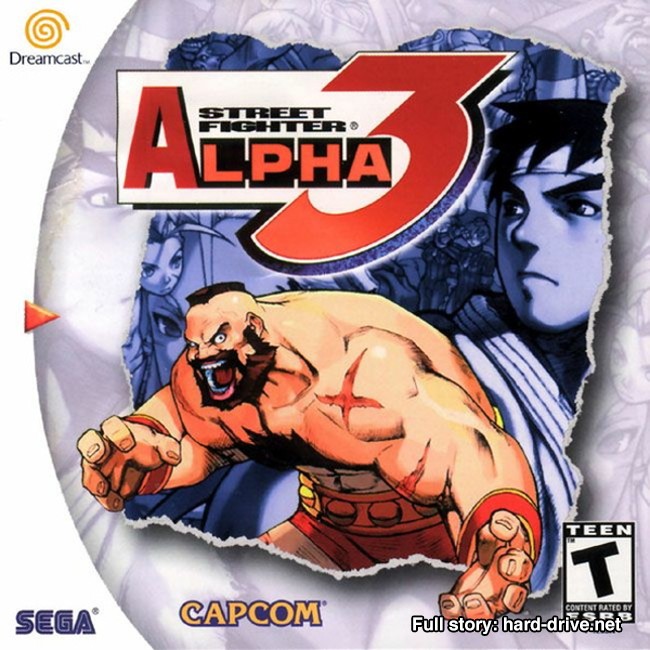
“Ungh. Unnnnnnnnnngh. Capcom-dono. Just like that. Don’t stop.”
There is fierce competition in the world of fighting games. Each one brings something unique to the table and has a passionate fanbase to support it. However, since Street Fighter II skyrocketed it to the top, the Street Fighter series has only continued to improve itself and enrich its already deeply compelling gameplay. Sure, there have been missteps. No one person or thing is perfect. However, before making the full transition to 3D/2.5D as the rest of the genre was, Capcom made the absolute best version of classic 2D Street Fighter with Street Fighter Alpha 3.
With a robust roster, three different fighting systems, and some of the most amazing artwork in the series, Street Fighter Alpha 3 encapsulates everything that makes this particular series so great. While there were many fighters in the Dreamcast library, Capcom broke the mold with this one , and if you have even the slightest inkling that you might be into it, you owe it to yourself to experience it. — C. Dawson
#7. Power Stone 2
August 23, 2000
Capcom
 This is the definition of a good sequel. If you read the Power Stone review or played the original, you know how delightful of a party fighter it is. Power Stone 2 delivers above and beyond the first in every way.
This is the definition of a good sequel. If you read the Power Stone review or played the original, you know how delightful of a party fighter it is. Power Stone 2 delivers above and beyond the first in every way.
The same core cast of strange stereotypical sluggers is back, with Italy and The US getting new representation. Gourmand is a stereotypical Sicilian since he’s a chef, looks like a mix between Mario and Wario, and (like all Italians) turns into a dinosaur. Clearly MERICAN cowboy Accel runs like Naruto, stands like JoJo, and shoots like a Republican. Also Julie is some sort of Southern belle and Pete’s a fucking nerd.
Fights take place on fanciful stages, from constantly-shifting boats and skyships to elevator platforms and temple ruins. Stages also have mid-match events like running away from a boulder Indiana Jones-style while still beating the hell out of opponents. All that, plus the inclusion of boss fights and the item-nabbing Adventure mode make this a sequel that outshines its already bright predecessor. — J. Ruggiero
#6. Sonic Adventure
September 9th, 1999
Sonic Team
Sega
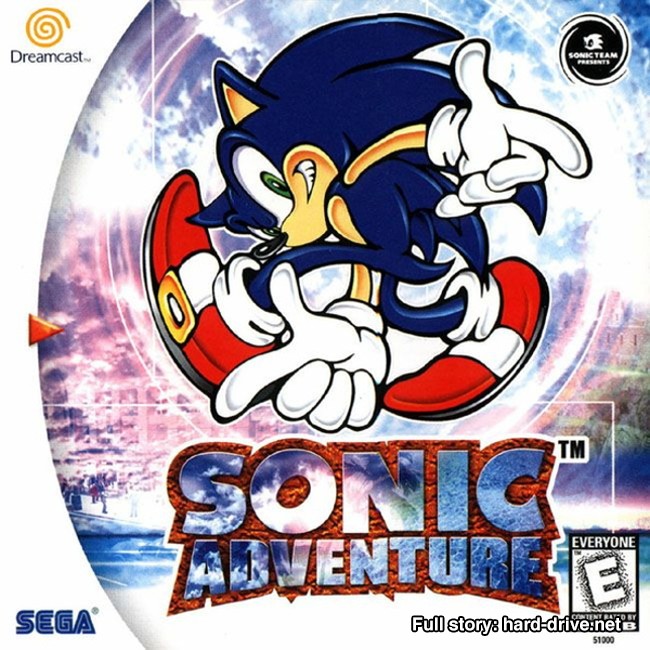
“This had better fucking work” is the motto I imagine every employee at Sega had on their minds when developing this launch title for the Dreamcast, their last ditch effort to stay relevant in the console wars. Spoilers: They fell in battle. But on the bright side, this game is fondly remembered by many as a stone cold classic.
Along with Sega’s struggle for relevance, it was decided that Sonic needed a new look. Something bold, something daring, something that screamed “the late 90s”. And boom, there it was: gone was Sonic’s soft smile and stout stature, replaced now with a thinner frame, pointier shoes, and an attitude that makes you think “Wow, maybe I should draw myself being digested in Sonic’s big pregnant belly.” Open your heart, dude! Speaking of, this game introduced the world to Crush 40, the band who solidified Sonic’s new signature buttrock sound. Listen, people love to shit all over these games’ soundtracks, but they fucking rule, dude, and I’ll fight anyone who comments otherwise.
The major criticism against this game is the pacing. People are used to running around and going very fast in Sonic games, which you can still do! In the Sonic levels. Sonic was only one of several playable characters in this game, being joined now by Tails, Knuckles, Amy, E-102 Gamma, and of course, Big the Cat. Each character had their own unique style of gameplay including treasure hunting, run and gun shooting, and of course, fishing. Perhaps most importantly though: this game gave us the Chao Garden, a sub-game so addictingly good that it added an incredible amount of replay value to an already amazing game. Love those little fuckers! — K. Podas
#5. Tony Hawk Pro Skater 2
November 7, 2000
Neversoft
Activision

Tony Hawk’s Pro-Skater 2 is what caused me to want to be a skater for a Summer. Unfortunately, I found out the hard way that doing rail grinds is more than just pressing the Y-button and listening to Rage Against The Machine. Luckily, no matter how many times I wipe out in real life, I’ll still have this game to prove that I’m the best skater around. Also, not only will it let you live out your fantasy of being as good as Rodney Mullen in his prime, but you can also play as Spider-Man. Any game that lets you shred as Spider-Man is gonna be an instant classic. For years the gaming industry has tried to recapture the magic in this game, from the SKATE series to Tony Hawk Pro Skater 1+2, but no matter what, the OG is still among the best. — G. Porter
#4. Marvel Vs Capcom 2
June 27, 2000
Capcom
 I have a confession. I suck ass at fighting games. I simply cannot memorize all those moves and mechanics and inputs when I just want my guy to do some cool kicks and shit. That’s why I love Marvel Vs. Capcom 2. Not only does this game have a huge roster of my favorite Marvel guys, SPECIFICALLY the versions seen in the Fox Kids cartoons from the 90’s, but it’s also pretty easy to get them to do something cool just by button mashing. I’m sure some of you are screaming about how I’m playing it wrong and need to git gud or whatever, but I just want to see Cyclops shoot a laser at Zangief. My favorite character actually ended up being Jill Valentine, who can summon a flaming zombie and give you a green herb as an assist. In an era where we’re inundated with fighting game crossovers, there’s still something unique and exciting about MvC2. And there’s a cactus guy! He’s not from any other Capcom games! They just got a cactus guy in there! — S. Finkelstein
I have a confession. I suck ass at fighting games. I simply cannot memorize all those moves and mechanics and inputs when I just want my guy to do some cool kicks and shit. That’s why I love Marvel Vs. Capcom 2. Not only does this game have a huge roster of my favorite Marvel guys, SPECIFICALLY the versions seen in the Fox Kids cartoons from the 90’s, but it’s also pretty easy to get them to do something cool just by button mashing. I’m sure some of you are screaming about how I’m playing it wrong and need to git gud or whatever, but I just want to see Cyclops shoot a laser at Zangief. My favorite character actually ended up being Jill Valentine, who can summon a flaming zombie and give you a green herb as an assist. In an era where we’re inundated with fighting game crossovers, there’s still something unique and exciting about MvC2. And there’s a cactus guy! He’s not from any other Capcom games! They just got a cactus guy in there! — S. Finkelstein
#3. Sonic Adventure 2
June 23, 2001
Sonic Team USA
Sega
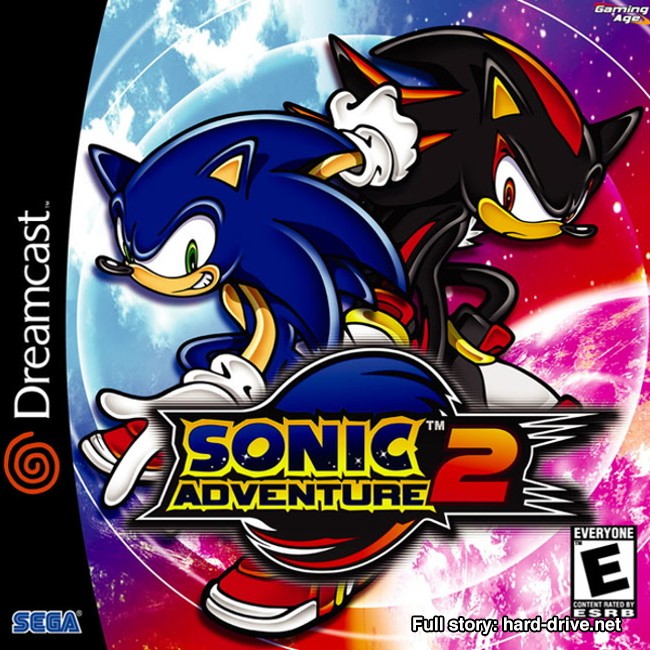
Emerging from the ’90s into the brave new world of 2001, Sonic Adventure 2 was the perfect culmination of all things Sonic. Following on Adventure‘s heels, the game more fully catalyzes Sonic’s reputation as a freedom-loving, devil-may-care hero who embraces counterculture, defies authority, protects the planet, and most importantly, punches cops.
The game is not ashamed of what it is, and leans into the absurdity of its premise with a deep, earnest sincerity that hits like an Eclipse Cannon to the soul. For the uninitiated, Sonic Adventure 2‘s ambitious narrative was fully storyboarded prior to the development of levels and gameplay, and it shows: the story is batshit insane, and yet so seamlessly, proudly itself that it’s infectious. The tragedy of the Space Colony ARK, the criticism of the military through G.U.N., Sonic’s ever-present pop-environmentalism, two rival hedgehogs duking it out in fucking space — this game has it all, and maintains a strong cultural relevance to this day.
And that’s not even getting into what Shadow the Hedgehog did to the world. Shiro Maekawa, the lead scenario writer on SA2, once said that he felt a deeper connection to Shadow the Hedgehog than to his real family. Ask any teenager with two-toned hair, and they’ll tell you the same thing. Shadow the Hedgehog was and is a god among emo kids, a legend among all his haters and imitators, a champion of darkness and pathos. If you didn’t want to be as cool as he was when you grew up, you’re lying. And to top it all off, his existence has inspired countless yaoi tapestries of him and Sonic making out and fucking nasty for decades. Romeo and Juliet who?
Gameplay-wise, SA2 drew some criticism from fans of Sonic Adventure for being much more railroaded, and for having some very frustrating treasure hunting and rooty-tooty-point-and-shooty stages. Sick of Pumpkin Hill? Can’t shoot enough G.U.N. Beetles for an A rank in Cosmic Gate? Skill issue, loser. I collected all 180 Emblems fair and square, and so can you. And if you can’t? Guess you better go to the Chao Garden, kiss those adorable little fuckers on the head, and have a wonderful time raising them to be killing machines in karate tournaments! And you will like it! — L. Fisher
#2. SoulCalibur
September 9th, 1999
Namco
Namco

I had personally not played the original SoulCalibur before this review. When I was younger I started with SoulCalibur II, which I played the hell out of. I was relieved to see that the original isn’t just a half-baked proof-of-concept. Everything I knew and loved is still here and the gameplay immediately clicked back into the muscle memory of my fingertips. The SoulCalibur series in general just feels more accessible to me than most other traditional fighting games, and is the first one that really “clicked” with me: the freedom of space it offers with 3D movements, combos aren’t super complicated and are intuitive to pull off, and the weapons-based fighting system is incredibly fun to master, which includes nunchucks, swords, axes, and of course, whips and leather. Whether you KO an opponent or knock them out of the ring by backhanding them with the hilt of your sword, victory is incredibly satisfying to attain.
The game looks absolutely stunning to this day, and it’s insane to think that this was released in 1999. The amazing presentation is accompanied by incredible sound design, an orchestral soundtrack, and god tier character designs, which may or may not have to do with the fact that I think I was in love with every female character in this game at one point of my life. — K. Podas
#1. Jet Grind Radio
October 31, 2000
Smilebit
Sega
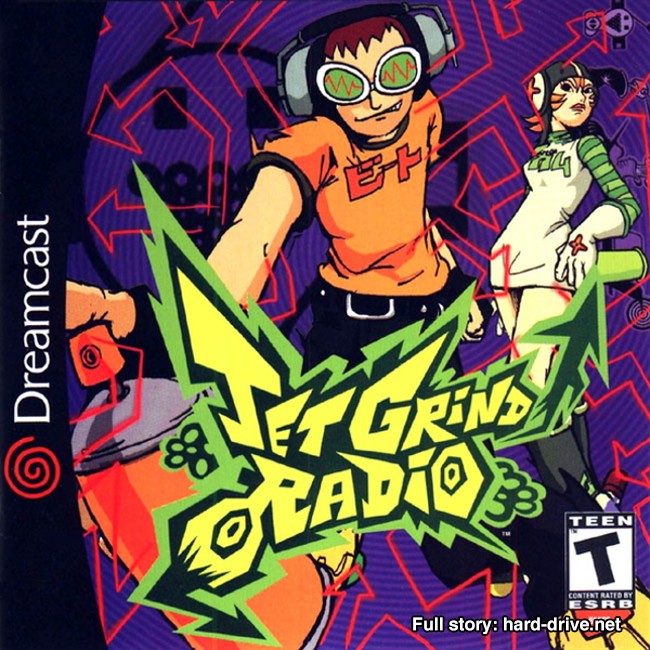
Jet Grind Radio makes you feel like the coolest person on the planet. So, strap on your inlines, turn the volume as loud as it can go, and rebel against the corrupt forces of Tokyo-to. Everytime I flick my stick to spray graffiti all over the city, a part of me becomes Basquiat, but way cooler and on rollerskates. With a heavy sense of momentum, it truly feels like you’re skating around, grinding on rails and performing sick tricks. It’s also filled to the brim with contempt of authority, which is always a plus. And it is impossible to play this game and not be in awe of the visual style. Using a innovative cel-shaded art style that would go on to make Zelda fans shit their pants in two years, it still looks amazing over 20 years later. I certainly don’t look amazing after 20 years, but I’m also not the coolest game on the Dreamcast. — G. Porter
Did we miss any games? Let us know in the comments and we’ll write them up and use it as an excuse to repost this whole damn thing!
Want to read another ’90s video console game ranking?! Check out the time we played and reviewed every single N64 game!
